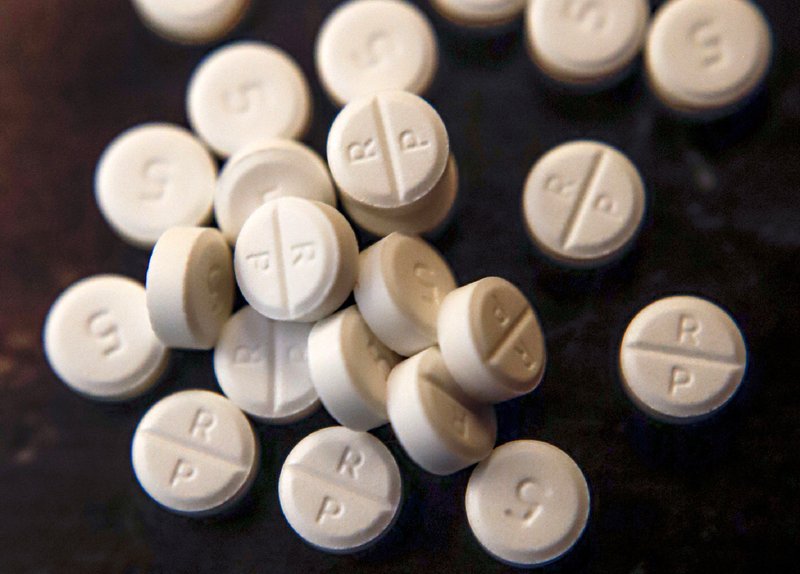Some measures of opioid prescribing are trending downward, but overdose deaths have ticked up slightly, according an annual report from Arkansas' prescription drug monitoring program.
The analysis released Tuesday found that Arkansas residents filled 3.2 million opioid prescriptions in 2018, totaling more than 186 million pills -- a drop of 21% from the roughly 235 million pills distributed in 2016.
But the state's rate of 102.1 prescriptions per 100 people still eclipsed the national average of 58.7, a figure compiled by the federal Centers for Disease Control and Prevention, the report said.
"[The Arkansas rate] is declining, but it's still close to almost twice what the nation's average is," said Jamie Turpin, administrator of the drug monitoring program. "We still have a ways to go."
The program gathers data from controlled drugs dispensed at Arkansas pharmacies and, in some circumstances, at places such as veterinary offices.
The report covering last year identifies several areas in which opioid prescriptions are on the wane in the state, such as morphine milligram equivalents, a measure of prescriptions' potency.
Since 2014, the total morphine milligram equivalents dispensed in the state has fallen by 28%, it said. Lower morphine milligram equivalents are thought to be less likely to trigger an overdose.
"Doctor shopping," defined as a patient seeing five prescribers and five pharmacies in a 90-day period, also was down, falling from 300 patients flagged by the program in the first quarter of 2017 to 61 during the last part of 2018.
Some of those reductions could be related to more widespread use of the monitoring program, which was mandated for providers in 2017, said Haley Ortiz, substance-abuse and injury-prevention branch chief with the Health Department.
"That, in combination with the prescriber comparision reports that we started issuing -- where individual providers can see how they stack up to those in their self-selected specialty -- really is raising awareness," she said.
"I think folks are just starting to take notice of this, and really [have it] impact their practices."
The 2017 rule change required providers to check the registry before prescribing Schedule II or III opioids, including oxycodone or hydrocodone, as well as for a first prescription of benzodiazepenes.
Other measures of opioid prescription from this year's report were less conclusive, such as the 4% of Arkansans who were using chronic opioid therapy in any six-month period.
The analysis said that number has been pretty stable since 2014.
Opioids remained the top-selling controlled medication class, followed by benzodiazepenes and stimulants, the rates of use of which are still being analyzed.
Health Department officials said they pay close attention to the rates of prescriptions, rather than the absolute number, because that metric provides a more accurate understanding.
County-level rate maps included in the report showed clusters of high prescription rates in areas such as northeast Arkansas and near Garland County.
With 164.7 prescriptions per 100 people, Poinsett County had the highest prescription rate, and also was the county with the highest average prescribing rate between 2015 and 2017, according to last year's report.
This data can't show why those hot spots exist at the clinical level, Turpin said, but it provides an opportunity to reach out to county health units and offer education in those areas.
Prescribing trends similar to those in Arkansas have been reported in some nearby states.
A report from the Mississippi Prescription Monitoring Program show that nearly 1 million fewer opioid prescriptions had been filled there in 2018, as compared with 2014.
Morphine milligram equivalents dispensed in Tennessee had been nearly halved since 2012, according to a 2018 report to that state's Legislature from its Controlled Substance Monitoring Database.
Thirty-four states' monitoring programs are linked to the Arkansas system, while neighboring Missouri is the only state in the U.S. that does not have such a registry.
"It would just be great if everybody had one," Turpin said. "People don't stop at state lines."
DEATH TOLL
The report said overdose deaths in Arkansas rose slightly in 2018, with 426 fatal overdoses last year based on provisional vital statistics data.
That's up from 417 overdose deaths in 2017, though Mike Cima, the Health Department's chief epidemiologist for outbreak response, cautioned that that figure includes all drug overdose deaths, not just opioids.
"We do see prescription opioid overdose deaths decreasing in the state over the past couple of years -- but we are simultaneously seeing an increase in heroin overdose deaths," he said, as well as deaths from the potent opioid fentanyl and from methamphetamine.
One troubling trend in Arkansas has been "polysubstance" abuse, in which people use methamphetamine that is laced with fentanyl or who are injecting methamphetamine and also using opioids, Cima said.
Garland County had the highest rate of overdose fatalities.
State drug director Kirk Lane also highlighted the presence of fentanyl in other drugs as a possible contributor to deaths, though he added that inconsistent reporting by the state's coroner system might cause variance in that data.
More enthusiastic adoption of safety measures, such as the co-prescribing of the overdose reversal drug naloxone with opioids, could help reduce the death rate, he said.
Lane said he hadn't yet reviewed the monitoring program's 2018 report, but was aware of some areas of improvement.
"Looking at our prescribing rate, it's coming down, slowly. We're getting great buy-in from the medical profession," he said.
"Until we reduce the amount of opioids that we're prescribing to the public, it's going to be a difficult road."
Metro on 08/21/2019
